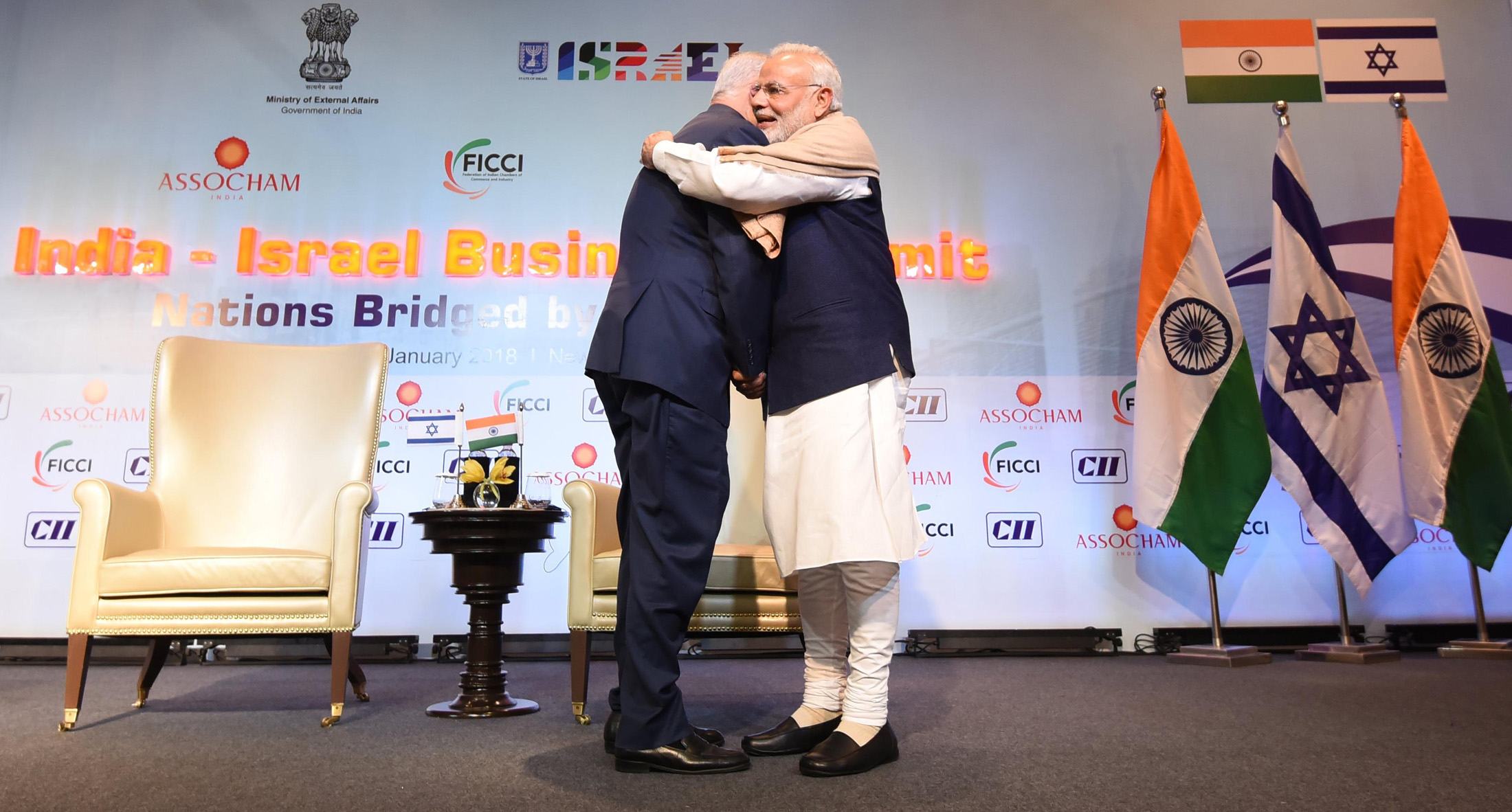Title: Hostile Homelands: The New Alliance Between India and Israel
Author: Azad Essa
Publisher: Pluto
Year: 2023
Hostile Homelands: The New Alliance Between India and Israel, by Azad Essa lays bare a picture of two intimate allies, increasingly united by right-wing ideologies of “racial purity” and a shared goal to militarily suppress mass movements for self-determination: Israel in the Occupied Palestinian Territories and India in Indian Occupied Kashmir.
In the twentieth century, as the book explains, the ascendant Indian independence movement via the Indian National Congress (INC) expressed strong solidarity with Arab nationalism and the Palestinian cause. After independence from the British colonialists in 1947, support for Palestine reflected India’s position at the forefront of Third World decolonisation and non-alignment.
Today India is far from its anti-colonial past. In the 2023 to 2024 Israeli military campaign in Gaza, Hindu nationalists, headed by Prime Minister Narendra Modi, have been vocal in their support of Israel’s occupation of Palestine and social media campaigns of harassment toward those expressing solidarity with Palestinians. Some have also called for Indians to volunteer for the Israeli army.
Hostile Homelands is important because it unveils how sympathetic undercurrents to Zionism and the Jewish state are not new. Whilst the INC with its intra-communal secular politics dominated anti-colonial and post-independence politics, Essa carefully shows how in the early twentieth century “Hindutva” also emerged as a powerful political philosophy and social movement. Centring upper-caste Hindu racial purity and cultural supremacy, with an anti-Muslim ethos, Essa shows how in the 1930s and 1940s, Hindutva leaders sought to emulate European fascists and Zionists in Palestine.
Essa explains, however, the deep alliance of Israel and India intensified the era of economic liberalisation that started in the 1980s and 1990s, which coincides with the growing electoral power of right-wing Hindu nationalism.
A crucial contribution of the book is how it connects the India-Israel relationship to India’s need to crush the mass popular Kashmiri demands for self-determination against Indian military occupation, which also exploded in the late 1980s (dubbed the Kashmiri Intifada). Kashmir would become a testing ground for Israeli counter-insurgency tactics and weapons – this continues today.
This nexus of economic liberalisation, right-wing Hindu nationalism – which was framed against neighbouring “Muslim” Pakistan or India’s Muslims, and military repression in “Muslim” Kashmir, fuelled the India-Israel relationship. By 1998, the right-wing Bharatiya Janata Party (BJP) became a real player in Indian politics challenging the mainstream Congress Party (inheritors of the INC) for parliamentary seats. In 1998, India also conducted its first nuclear tests, and in 1999 it fought a war against Pakistan (the Kargil War) with direct assistance from Israel. In 2001 when the U.S.-led War on Terror started, Kashmir resistance was framed as Islamic terrorism which justified Indian military repression to local and global audiences.
Defence and diasporic connections
Hostile Homelands shows how Indian and Israeli diplomatic exchanges have expanded through joint defence ties, joint military exercises, and training programs in which suppression of Kashmiris and Palestinians are intimately bound. We read how Israel helped India upgrade its Russian-supplied weapons systems and that from 2000 to 2010, India became Israel’s largest arms customer, importing $10 billion in arms.
Hostile Homelands is an urgent read because it renders visible what is happening now: upper-caste Hindu nationalists are using Israeli advice and tactics to capture public support in wealthy diasporic spaces from the U.S. to the U.K.
In 2014 when the BJP became the ruling party under Narendra Modi, the alliance took on new forms. In 2017 Modi visited Israel but not Palestine to show Israel was no longer an ally but a strategic partner. Instead, an emerging entente between Israel, Arab autocracies, including the UAE, India, and the U.S. against Iran launched the “West Asia Quad“: India was to provide labour and market access, the UAE capital, Israel technology, and the U.S. political leadership.
Essa shows how pro-Israeli lobbies in the U.S. like American Israel Public Affairs Committee (AIPAC), Anti-Defamation League (ADL), and American Jewish Committee (AJC) are mimicked by Hindu nationalist groups in the U.S, including groups like Hindu American Foundation (HAF). Similar to pro-Israel groups who weaponise anti-Semitism to suppress criticism of Israel, the HAF and others suppress criticism of Hindutva policies under the guise of combating “Hinduphobia.” (Something that is starting to be used in the UK too.) Similar to pro-Palestinian social media voices, those who are critical of the BJP-led government or sympathetic to Kashmir are harassed online by social-media trolls and faced with law-suits.
Essa describes Hindu nationalist groups as creating an “official American Hinduism,” that prioritises an upper-caste Hindu identity at the expense of other Indians. This version of “Indian-Americans” promotes themselves as a “model minority”, ignoring how their upper-caste and class status has enabled their seeming success. (Again, we see this in the U.K. too vis a vis Rishi Sunak, Priti Patel, and Suella Braverman who position themselves as Hindu Indians, and never to be mistaken for Muslims.)
In this moment of a genocide in Gaza, the book is an urgent tool that helps us to understand how Israel sustains itself through powerful partners and also enables its allies to engage in their own violent ethnonationalist projects, which, in this case are sustained by anti-Muslim hatred from a Hindu nationalist Indian state.










